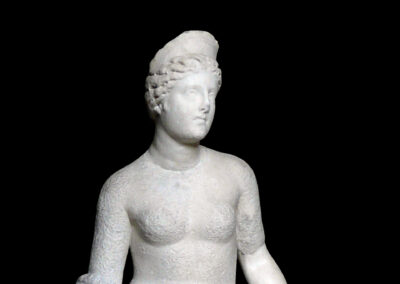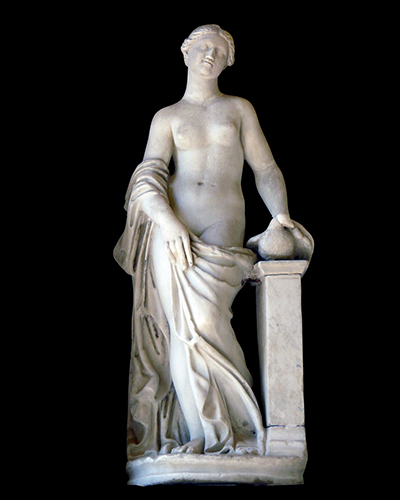Venus pudica, variant of the "Venus of Syracuse".
Described in ancient inventories as "Another white marble statue of a nymph holding a dolphin in her hand" (1588); "Another ancient marble statue also in its niche, five and a half quarters high, representing the goddess Thetis" (Inventory of 1751); "A shattered Venus with her dolphin, not much inferior in my opinion to the Venus de Médicis" (Antonio Ponz. 1780), in fact, the body of this sculpture is a variant of a known type of Venus, the so-called Venus of Syracuse, often copied, which may have been developed before the Hellenistic period.
The head, made of a finer marble than that of the body, can be dated to the first half of the 3rd century AD, therefore later than the body, dated to the end of the 2nd century, and because of its hairstyle and tiara it is not a head specific to representations of Venus, but the same model may have been used for various young goddesses.
The right hand, the left arm from the elbow to the hand together with the dolphin are of a different marble and are pieces possibly added in the 16th century.




